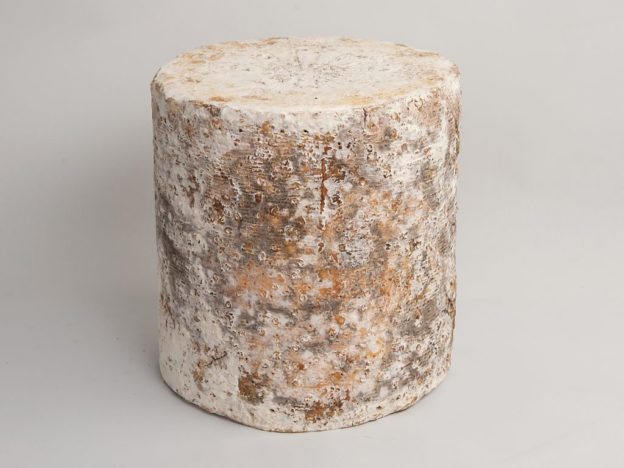Blue Stilton PDO
The Basics
| Make | Crumbly |
| Sub Make | Curd from a single day |
| Post-Make | Internal (blue) mould |
| Sub Post-Make | Natural rind |
| Typical age profile | Three months |
| Approximate weight(s) | 8kg |
| Geographical origin | Midlands, UK |
| Protected status | UK GI - Protected Designation of Origin (PDO) Must be made in Leicestershire, Derbyshire or Nottinghamshire using pasteurised cows’ milk |
| Species of milking animal | Cow |
| Breed of cow | Breed not specified |
| Raw/pasteurised milk | Pasteurised |
| Vegetarian/animal rennet | Examples of both depending on cheesemaker |
| Commonly encountered variations | White Stilton PDO; Mature/Vintage Blue Stilton PDO |


The Story
Under its PDO, Britain’s most famous blue can only be made in three counties with just six producers currently in operation. It’s roots stretch back to at least the early 18th century and the village of Stilton in Cambridgeshire, when it was a hard, creamy cheese (which, according to Daniel Defoe, was served riddled with mites or maggots). But over time production concentrated in the Midlands and the cheese became the popular blue of today.
Blue Stilton must, by law, be made from pasteurised cows’ milk. Starter cultures, the blue mould Penicillium roqueforti and rennet are added to set the curd. It is then cut and drained overnight, before milling, salting and moulding in cylindrical hoops. The cheeses are turned not pressed, creating an open texture with space for the blue veins to grow during maturation. This begins at five weeks when the cheeses are pierced with spikes, allowing oxygen to penetrate and activate the blue mould.
The Character
Look for an even web of veins that spread out from the centre to the rind. Young cheeses can be sharp and tangy, but as they mature they mellow, becoming much richer with complex dairy, fruity and umami flavours. The crumbly texture becomes creamier as it matures.
Perfect Partners
Port is the classic combination, but dessert wines and porters also work well – their sweet flavours contrast with the salty cheese.

















